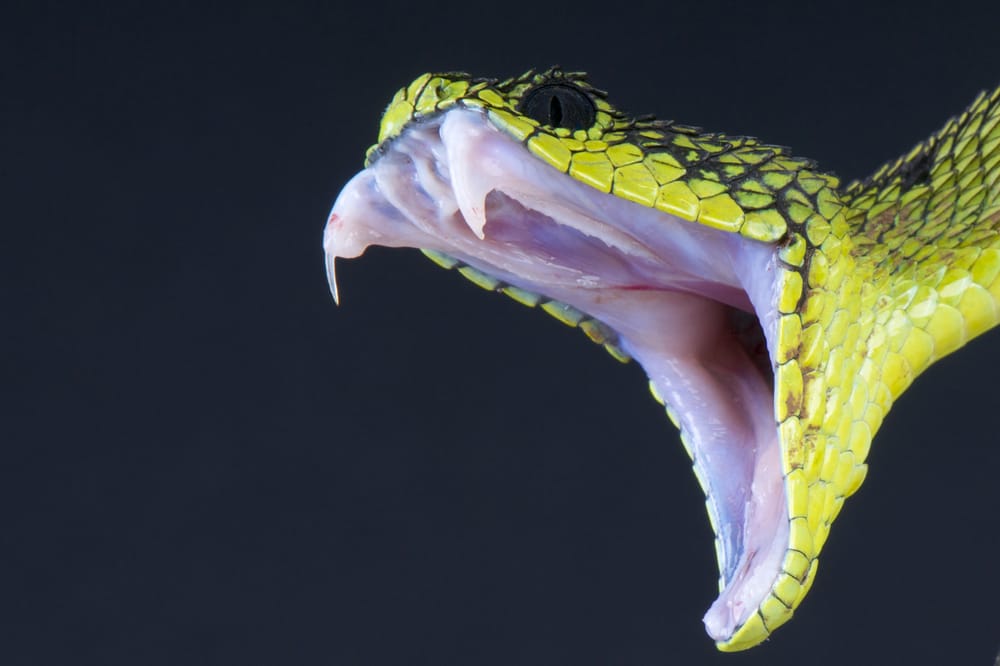Until recently, not many people had heard of Alphabiotoxine—a rapidly developing Belgian company and the largest producer of diverse animal venoms in the world. All venoms hold a mixture of hundreds of highly specific and potent molecules, which are used as lead compounds in drug design and development. We spoke with Aude Violette, the Chief Scientific Officer at Alphabiotoxine, about this unique business in the Walloon region.
Established by Rudy Fourmy in 2009, Alphabiotoxine employs only a few people and functions under very strict biosafety and animal welfare requirements. Nevertheless, the company produces a remarkable catalog of animal venom, isolated from no less than 300 species, which is distributed to the research and pharmaceutical sectors upon customer demand.
It is safe to say that we are number one in terms of diversity of our products.
“There are other companies that produce more than we do,” specifies Violette. “But our specialty is to provide very different components. We isolate venom from snakes, scorpions, cone snails, fish, sea anemones, sting rays, and marine snakes. For example, no other company in the world is producing stonefish venom. Nobody is selling this.”
Stonefish, the most poisonous fish, can be found in the Indo-Pacific waters, and a sting of its venom causes intense pain, damage to the cardiovascular system, and paralysis. Yet, how does it come to be that this lethal cocktail is exploited as a therapeutic option?
The secret behind venom and drugs
Each animal venom is a specific mix of proteins, peptides, and small molecules perfectly designed to attack the animal’s typical prey. The peptides have exquisite selectivity and minimum side effects when they target the vital receptors of the blood, muscles, and nervous system. This is usually what a doctor hopes a drug will do.
‘’The key point is that toxins have been engineered by nature with a purpose—to do damage, of course, but each of the molecules has a very specific activity. This is where it becomes interesting for pharmaceutical applications.”
“Perhaps the specificity is even more important than the potency for a good drug candidate,” says Violette. “For example, you have sodium channels in every muscle in the body. But there are different subtypes in the heart, or the skeletal muscles, and you want to discriminate between these in a targeted therapy. And you can do this with toxins isolated from the cone snail venom.”
Indeed, what makes venom so deadly is also what is so valuable in medicine. But this doesn’t mean that doctors will recommend that you keep venomous snakes, spiders, or bees in your backyard. Venom is a complex mixture of hundreds of toxins, and you need to isolate a single one that is therapeutically potent and safe. When it comes to cone snail venom, one specific peptide was used to synthetically produce Ziconotide—a painkiller 1,000 times more powerful than morphine. One of the best selling drugs for hypertension—Captopril—is also based on toxin-derived properties, but this time from a poisonous Brazilian pit viper. Diabetes patients manage their glucose levels using a synthetic version of exendin-4, a hormone isolated from the saliva of the Gila monster lizard.
The list of approved venom-based drugs, ongoing pre- and clinical trials is long. They touch upon almost every medical condition of high prevalence such as blood-related disorders, diabetes, Alzheimer’s, Parkinson’s, and depression as well as many other neurological diseases, cancer, and pain.
What can you do with a milligram of venom?
Alphabiotoxine provides the raw material for the discovery process, i.e. a crude, freeze-dried venomous extract. This extract has to be fractionated to pull out the most relevant molecules, which could easily be more than hundreds. After the isolation of the venom’s peptides, synthetic or recombinant peptides can be tested in cellular assays or animal studies. “Something we don’t always think about,” punctuates Violette, “is that these toxins are usually water soluble, which makes them easy for testing.”
Activity screening performed on a bank of toxins instead of a classical combinatorial chemistry molecules bank is much more efficient in terms of hit identification.
Typically, a venomics-based biodiscovery strategy involves an integrated approach with novel genomic, transcriptomic, and proteomic technologies. “Nowadays, you can work on a ‘milligram scale’ and do research on tiny amounts, something that would have not been meaningful before,” notes Violette. This makes a big difference in the venomics field, keeping in mind that the majority of venomous animals are very small, which previously made the isolation of sufficient material very challenging, if not impossible.
Scientists from the European research project VENOMICS, together with Alphabiotoxine, have established a high-throughput pipeline for the discovery of novel therapeutic peptides. The results are based on the largest collection of venom and tissue samples worldwide and are truly significant. They have generated a databank of 25,000 toxin sequences, of which more than 3,000 can be produced chemically or by recombinant techniques.
More than 150,000 venomous animal species are alive on Earth carrying more than 20 million toxins, and only a tiny fraction has been studied in detail. We are now starting to grasp the magnitude of natural peptides, their precision and speed of action, making them ideal templates in drug discovery.


